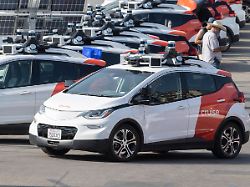After two accidents in the USA
Autonomous robotaxis are no longer allowed on the streets
October 25, 2023, 3:33 a.m
Listen to article
This audio version was artificially generated. More info | Send feedback
Along with the transformation from combustion engines to electric drives, autonomous driving is one of the biggest topics in the automotive industry. In the USA, a General Motors subsidiary has to temporarily withdraw its driverless robotaxis after two accidents involving pedestrians.
After two accidents involving pedestrians, the robotaxi company Cruise is no longer allowed to send cars onto the streets of San Francisco without people behind the wheel. The California Department of Transportation suspended the relevant permit indefinitely. The reason given was that the authorities believed the vehicles were not safe enough. Tests with safety drivers behind the wheel are not affected.
In an accident at the beginning of October, a woman got stuck under a Cruise robotaxi and had to be freed by rescue workers. According to the accident report, the pedestrian was initially hit by another vehicle with a human behind the wheel and thrown in front of the self-driving car. The self-driving car braked immediately – but was no longer able to prevent the collision. Cruise said it was looking into how the software could be improved to respond to such rare events.
The US traffic authority NHTSA (National Highway Traffic Safety Administration) recently initiated a preliminary investigation and referred to another incident. Accordingly, a cruise robotaxi drove to a traffic light intersection at the end of August with the green light on – and at the same time a pedestrian stepped in front of the vehicle. The software tried to evade and brake. However, the car still hit the pedestrian at a speed of around two kilometers per hour.
Many residents against autonomous driving
San Francisco is currently a unique test case for self-driving taxis. The General Motors subsidiary Cruise and the Google sister company Waymo are active in the city. They received permission from a California regulator over the summer to expand their driverless transportation services throughout the city.
The city administration and numerous residents were against it. Among other things, they argued that the software-controlled vehicles often blocked traffic and thus hindered rescue workers during operations. The companies emphasize that robot cars drive safer than humans.
